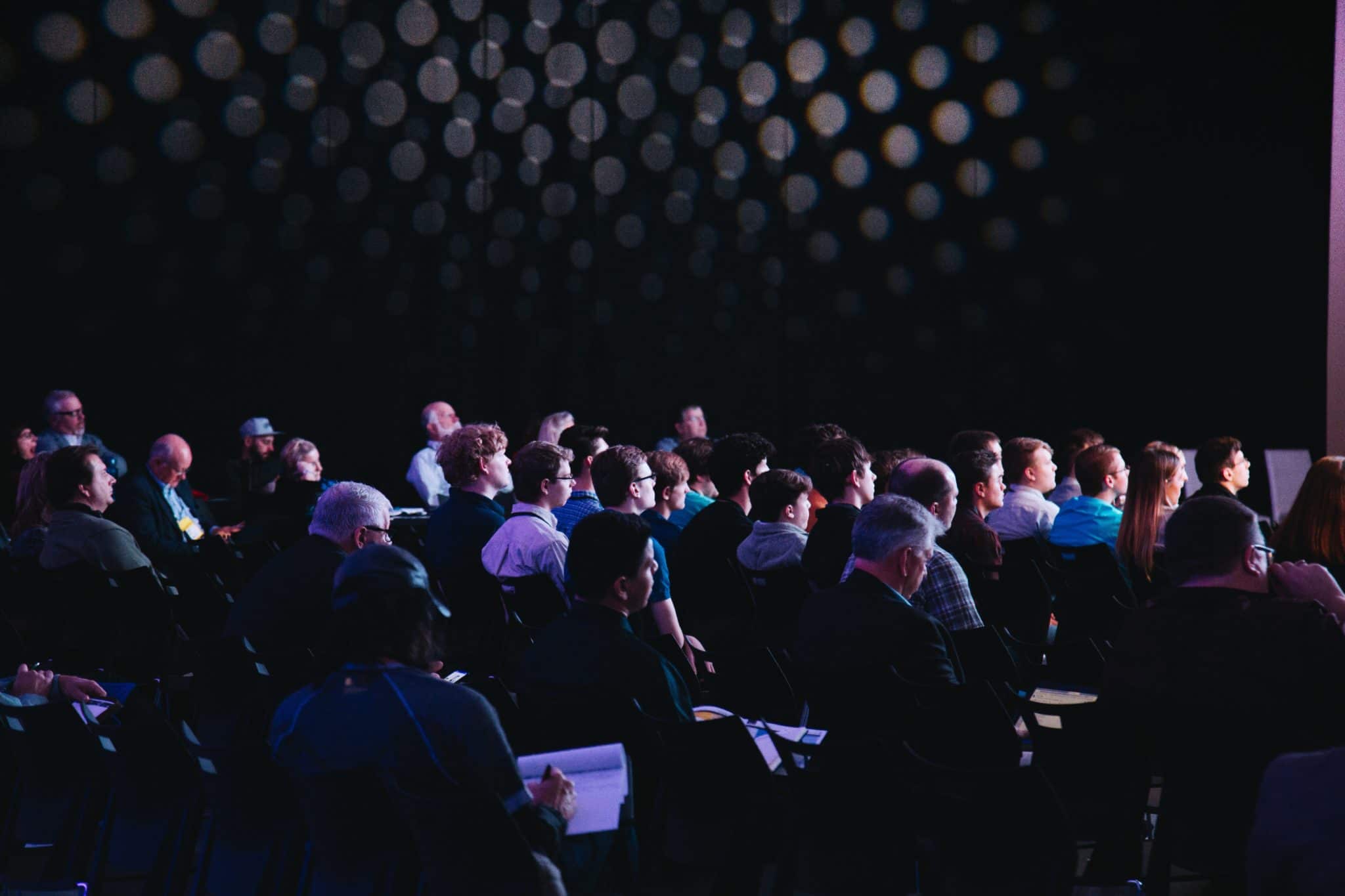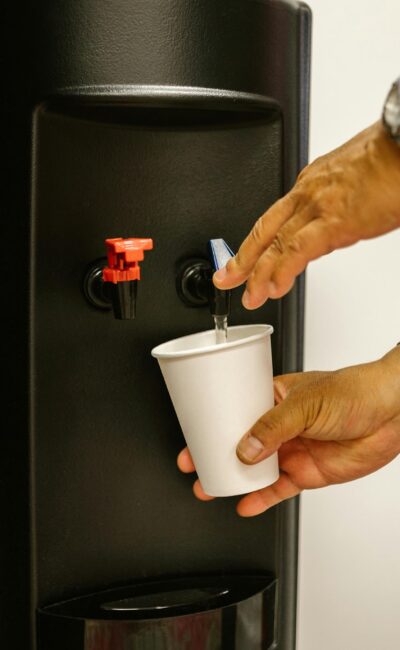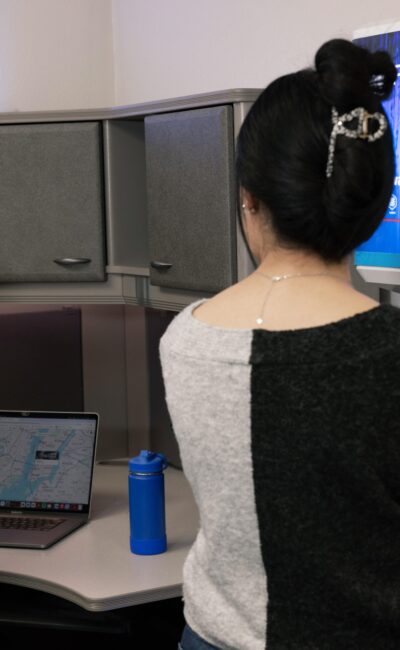A smooth and steady event flow is reliant on how well information is laid out and communicated. It is the foundation for the success of any event experience, big or small. Part of this involves coordinating behind the scenes with event staff, vendors, and the planning team. The other part is communicating with attendees in a manner that’s most convenient and accessible for them.
An event map is a visual resource everyone can use to locate where the main areas of interest are, such as the entertainment stage, seating, restrooms, concessions, and merchandise vendors. Providing an event map helps prevent confusion and provides assistance in the most user-friendly way. It also helps guide spacing and logistics for organizers hosting the event.
Most people expect to view a virtual event map via a dedicated event website that’s easy to navigate and understand. This central location also serves as a place guests can download tickets, view attendance details, and receive ongoing communication leading up to, during, and after the event. If you decide to distribute a paper map as well, the categories listed on your virtual iteration should coordinate. Either way, you can keep the event map simple and streamlined by including these six features.
#1: Event Information
Any marketing materials used to promote the event should immediately highlight the name of the event and include the event description, when and where it’s taking place, and any other high-level information a person may need at first glance. This includes performing artists or speakers and set times. It should also include transportation options and general venue rules to be aware of.
Unless you’re hosting an exclusive, members-only type of event, this information should be readily available and accessible to the public, regardless of if they’ve purchased a ticket yet or not. It delivers the information needed and allows the audience to better visualize the experience to persuade attendance.
#2: QR Code
With the majority of people using their smartphones for event access, create a unique QR code to make an event map easier for people to navigate to at the click of a button. A QR code also provides added flexibility to expand navigation to include:
- Setup Overview: Staging, seating, restrooms, hydration stations, concessions, and vendors.
- Ticket Information: How to buy tickets, when they go on sale, and payment options, if any.
- Experience Details: What to expect at the event, transportation options, food vendors, and other details that are important for the attendee to know.
Additionally, a QR code can secure an attendee’s ticket information on a mobile phone to eliminate the need for a paper printout. Though some venues still provide paper brochures or maps, these can easily be destroyed or lost. It’s now common for organizations to go purely digital to limit paper waste and provide information on-demand through a QR code, branded app, website, or a combination of all.
#3: Social Media Handles
An event map should also include social media handles to keep people connected leading up to, during, and after the event. It’s a good way to create buzz, as well as communicate need-to-know details with a crowd. As the event draws nearer, social media is a good way to share real-time news, such as traffic delays, weather forecasts, and other information people will want to know as they make their way to the venue.
Use a specific hashtag for the event to help filter messaging and share updates, special giveaways, and surprise announcements for those attending. Stick with the same handle, when possible, across all channels to prevent confusion and streamline branding. Also, include social media handles for performers and speakers to let attendees get to know more about who they’re going to see at the event.
#4: Exhibitor Information
Most events have sponsors or vendors selling merchandise or offering services during the event. These are curated to enhance the experience, either through free giveaways, contests, and swag offerings special to the event.
Illustrate the designated exhibitor area on the event map to allow attendees to plan their day accordingly and not miss out on where they are. This promotion elevates the experience for attendees, plus helps exhibitors receive as much foot traffic as possible.
#5: FAQ Section
Make an event map digital to provide greater opportunities to add more content. Reserving a space for FAQs can help guide attendees before they arrive. Include information, such as what time doors open, where to find the entry or greeting area, and what type of food and beverages will be available.
Providing answers to frequently asked questions limits confusion and frustration for attendees. This section should include information about:
- Bag policies
- Rules about outside food and drink
- How to get to the venue (including ride-sharing pickup/drop off spots)
- ADA accessibility
- Covid-19 updates and protocols
Every event and venue has similar policies but it’s important to update the specifics for yours so attendees know what to expect before arrival. Also, include contact information where attendees can connect with someone directly for specific inquiries and concerns.
#6: Water Access
An event map should show where the stage(s) or room(s) of the event are located. Also labeled should be restrooms, concession stands, first-aid tents, hands free water dispenser options, and entry and exit points. Having a bird’s-eye view of the venue provides key focal points to attendees as they navigate the event.
For a smaller event, these stations will likely be conveniently located near each other. However, for large, multi-day events, like music festivals, an interactive map makes it easier for attendees to get from point A to point B with ease. Consider the user experience as you’re designing the event setup and translating it on a smaller scale.
Why Water Stations Are Essential to Event Planning
Water dispensing stations are essential to event planning. Yet, organizers have begun to eliminate or greatly decrease the use of single-use water bottles to reduce plastic waste. Regardless of the type or size of event, attendees need to stay hydrated without limitations.
FloWater fulfills the needs of both guests and event planners by providing purified water to the masses in an easy and accessible way with hydration station rentals. Station setup is handled by FloWater’s certified technicians, and there can be multiple Refill Stations set up throughout the venue to ensure convenience for all in attendance. Having a safe water filter system provides several benefits that bottled water does not.
Accommodates High-Capacity Crowds
First, FloWater Refill Stations accommodates large crowds quickly. This is optimal compared to one-time use water bottles, which increases plastic waste and doesn’t provide the same level of convenience for people to stay hydrated throughout the event. And conventional event water solutions often have very slow fill times, which can create lines. A Refill Station holds seven gallons of purified water at all times, allowing attendees to fill up as many times as they’d like without contributing to plastic waste. This results in zero latency and on-demand water that has been ultra-purified with FloWater’s 7x Advanced Purification System. With the removal of up to 99.9% of viruses, bacteria, microplastics, and heavy metals including lead, the water is replenished with alkalinity and electrolytes for optimal taste and hydration.
Fast Fill-Time Limits Long Lines
Secondly, the fast-fill time eliminates long wait times and lines. FloWater Refill stations are up to 5x faster than a water fountain, any typical event water solution, or waiting in line at the concession stand for a bottle of water. The FloWater Refill Station fills a 24-oz. bottle in less than ten seconds and delivers crisp, cool, purified water every single time. It also conveniently fits any size of reusable container, which decreases the need to make multiple trips to fill up. It delivers a better experience and allows people to stay hydrated.
Meets ADA Compliance and Covid-19 Safety Precautions
A third benefit is the Refill Station meets ADA touch compliance, making it accessible for all. By using the FloWater Foot Pedal, anyone can enjoy the safety and sanitization features of the touchless water dispenser. With organizations taking extra precautions due to Covid-19, limiting the amount of surface contact helps prevent the spread of germs. Chemical-free sanitization through activated oxygen and a hidden catchment tray helps keep everything clean and sanitary for the duration of the event, without ongoing supervision required.
Provides a Sustainable Solution
Furthermore, the sustainable aspect of the Refill Station makes it alluring for attendees who value companies and organizations practicing environmental responsibility. The Refill Station eliminates the need for disposable plastic bottles, reducing the total plastic waste accrued during events.
It’s an energy-efficient system that takes up little room to fit in easily to any size of event. Plus, it provides organizers ROI metrics post-event, as well as a real-time bottle count of how many plastic bottles were saved as a result of using the hydration station.
Creating an Ideal Experience for Event Attendees
Attendees are not concerned about what it takes to coordinate an event, but rather the experience they have once they get there. Providing relevant information on demand can greatly improve guest satisfaction. Make an event map that’s easy to use and serves as a helpful guide to help attendees get the most out of the guest experience.
In addition to getting the information they need, when they need it, attendees are looking for convenience. Water stations have become as much of a key feature on any event map as the restrooms and performance stage itself. People want to be assured they’ll have access to clean, chilled, great-tasting water to stay hydrated throughout the event. FloWater offers immediate benefits that guarantee attendee satisfaction and provide added value for organizers. It’s the go-to solution for better event hydration.
Sources:
“20 Details You Should Always Include on Your Event Website.” SocialTables. https://www.socialtables.com/blog/event-marketing/details-event-website/
“15 things to Include in Your Event App.” SmartMeetings. https://www.smartmeetings.com/tips-tools/technology/116639/15-things-to-include-in-your-event-app
“What You Need to Know to Build an Effective Event Map.” EventBrite. https://www.eventbrite.com/blog/event-map-ds00/





